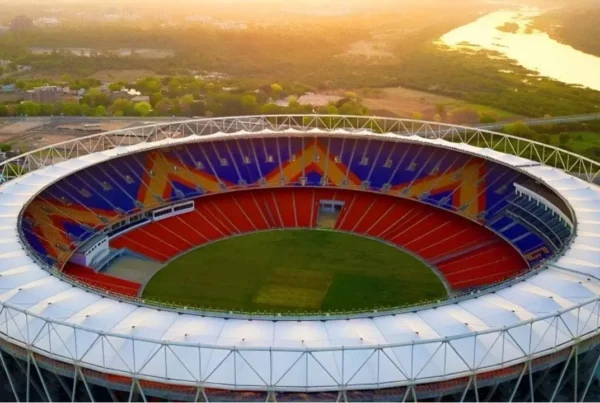India asserts that the Chenab Bridge holds the distinction of being the world’s highest railway bridge. Located in the Reasi district of Jammu and Kashmir, this bridge is situated between two hill slopes at an elevation akin to that of an 85-storey tower, towering at a height of 359 meters, surpassing the height of the Eiffel Tower in Paris.
Scheduled for inauguration in January-February 2024, the intention is to operate Vande Bharat trains along this route, along with Vande Metro trains connecting Jammu and Srinagar, thereby reducing the travel time between these two cities to 3.5 hours.
Union Railways Minister Ashwini Vaishnaw conducted a comprehensive inspection across the bridge using a trolley, overseeing the construction progress of the associated tunnels. The 1,315-meter-long (4,314 feet) bridge is an integral component of the broader Udhampur-Srinagar-Baramulla Rail Link (USBRL) project, aimed at enhancing the accessibility of the Kashmir Valley through the Indian Railway network. This project encompasses not only the Chenab Bridge but also features the construction of the country’s longest transportation tunnel and the Indian Railways’ inaugural cable bridge.
For Prime Minister Narendra Modi, who ascended to power in 2014 on the platform of nationalism and a commitment to future prosperity, investments in infrastructure projects such as the Chenab Bridge and the overarching rail link initiative serve as potent tools for social integration and political influence, fostering connectivity between disparate regions and key urban centers.
Michael Kugelman, Director of the South Asia Institute at the Wilson Center, notes, “The bridge and the enhanced connectivity it is designed to facilitate will be portrayed by New Delhi as another significant triumph for the region’s development.”
India now boasts the world’s tallest railway bridge, with the Chenab Bridge surpassing the Eiffel Tower by 29 meters (over 95 feet), soaring 359 meters (approximately 1,180 feet) above the Chenab River in the contentious Jammu and Kashmir region.
After decades of construction, the bridge in northern India is anticipated to be open to the public by the end of December 2023 or January 2024, according to a March press release from the Ministry of Railways.
The bridge’s foundation has been engineered to withstand an earthquake measuring up to eight on the Richter scale. The construction utilized approximately 28,000 tonnes of steel for the arch bridge.
Due to the robust foundation, the superstructure of the bridge will be shielded from potential impacts. Unlike typical D-shaped tunnels, Himalayan tunnels require a horse-shoe shape of curvature, providing an elliptical structure to deter loose soil, given the region’s susceptibility to frequent landslides.









Recent comments